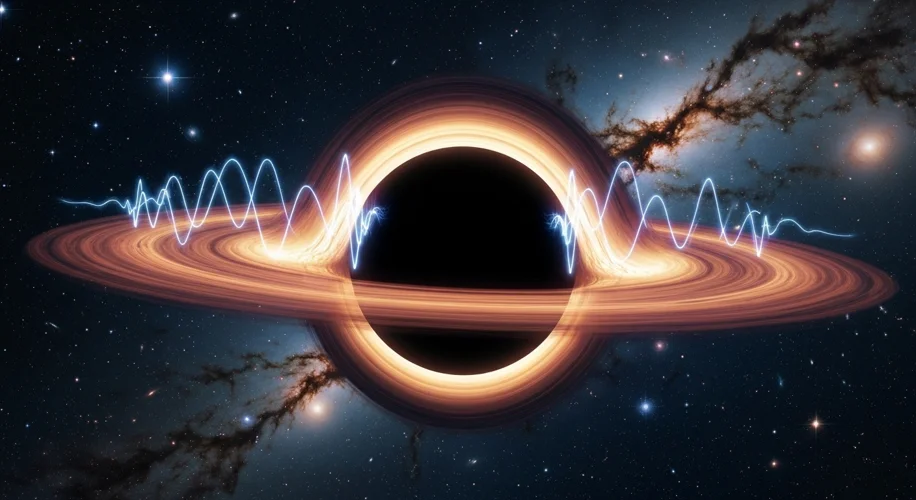Did you know that black holes might not be silent after all? For a long time, we thought of them as these ultimate voids, absorbing everything, including light and sound. But recent scientific discoveries are painting a much more dynamic picture, suggesting that these cosmic giants are actually emitting ‘songs.’ I’m so fascinated by this, and I want to share what scientists are uncovering.
Imagine trying to understand something incredibly powerful and distant, something that warps space and time itself. That’s the challenge with black holes. For years, scientists have been studying the patterns and structures associated with them, particularly the way matter swirls around them in what we call accretion disks, and the powerful jets of plasma they can eject. It’s like trying to decipher a secret language.
Recently, researchers have been using advanced mathematical techniques to analyze these complex patterns. What’s really interesting is that some of these methods have roots in Japanese mathematical traditions, which are brilliant at describing intricate spirals and sequences. Think of it like finding the rhythm and melody in the chaos. By applying these tools, scientists are beginning to understand the ‘lyrics’ of these black hole emissions.
How are they ‘hearing’ these songs? Space radio telescopes are playing a crucial role. These instruments allow us to observe the high-energy plasma jets that shoot out from the poles of black holes. These jets aren’t just random outbursts; they have structure and patterns. Scientists analyze the radio waves emitted by this plasma, looking for repeating signals or characteristic frequencies. These are the clues to the black hole’s ‘song.’
One of the key breakthroughs is understanding how these emissions relate to the black hole itself and its surrounding environment. The ‘songs’ seem to be influenced by how the black hole is feeding – how much gas and dust it’s consuming – and the properties of the superheated plasma. It’s like the black hole is communicating its state through these energetic emissions.
This isn’t just a cool curiosity; it has profound implications. By deciphering these cosmic sounds, we gain deeper insights into the fundamental physics governing black holes. It helps us understand how they grow, how they influence their host galaxies, and the extreme conditions they create. It’s a window into the most powerful objects in the universe.
I’m always amazed by how nature, even in its most extreme forms like black holes, reveals underlying order and patterns that we can, with enough ingenuity, begin to understand. It reminds me that even the most enigmatic phenomena can be deciphered when we look closely and apply the right tools. The universe is truly singing, and we’re finally learning to listen.

